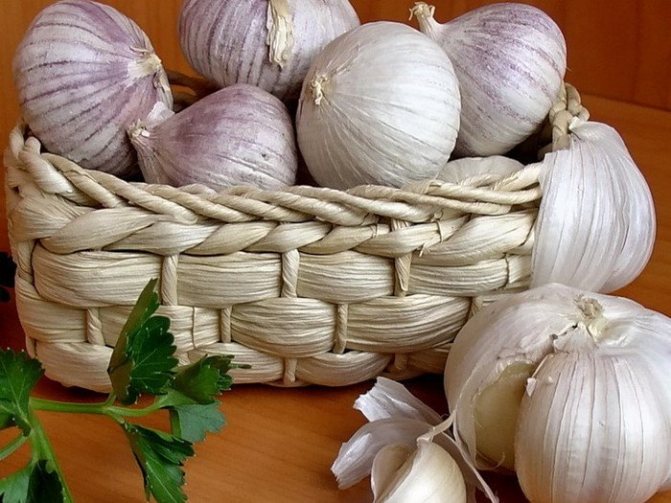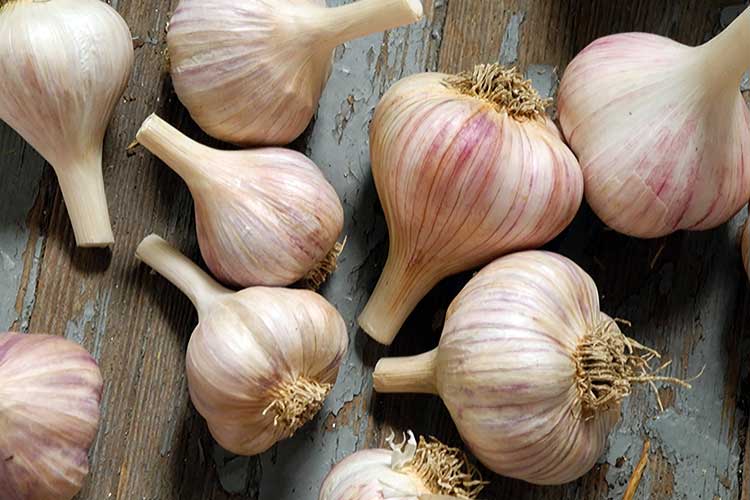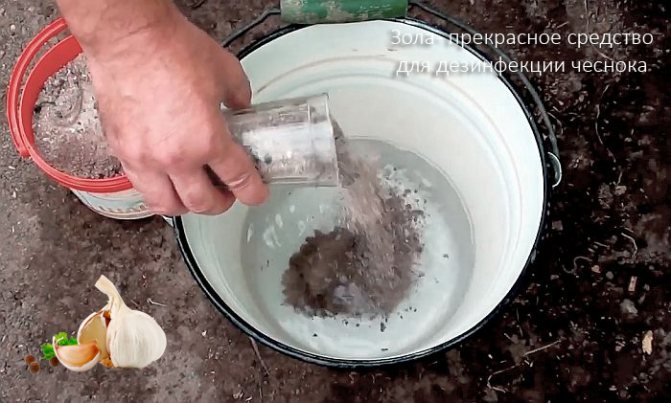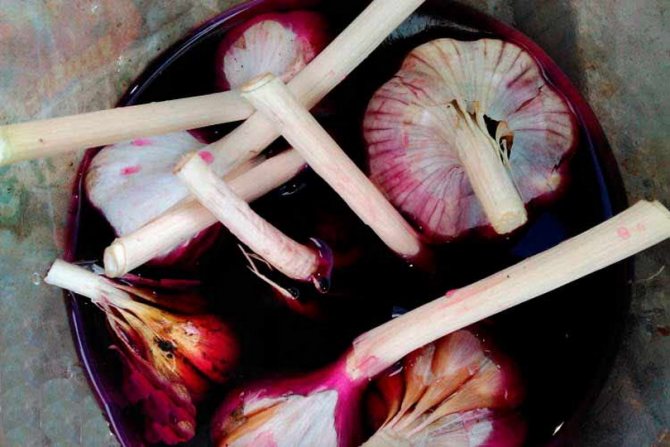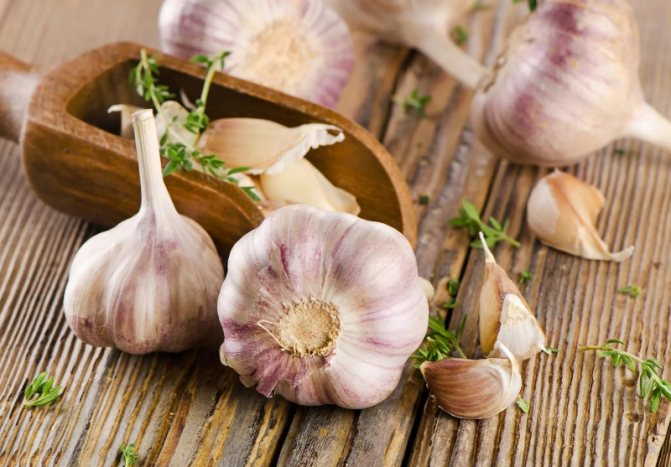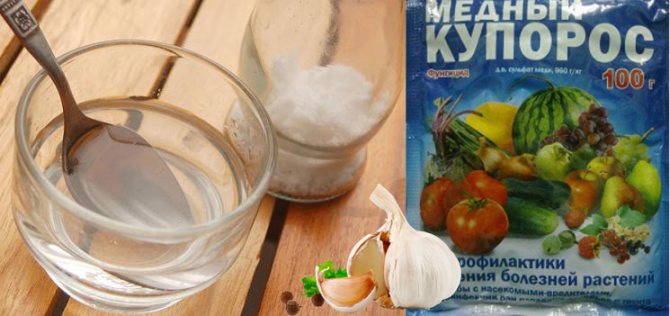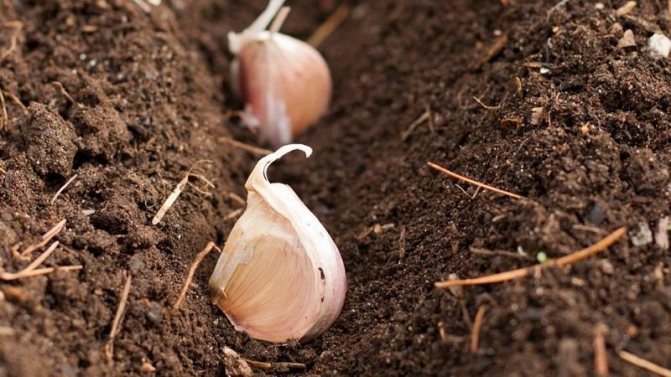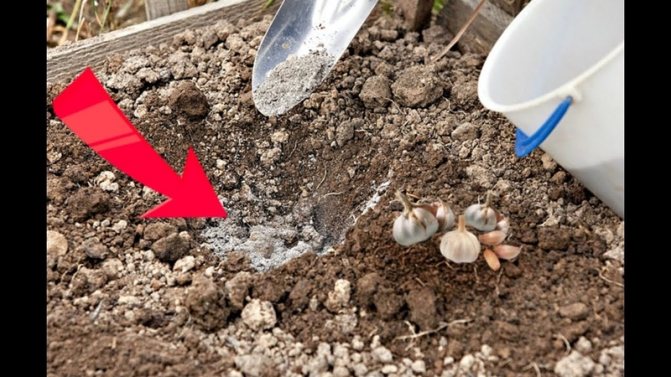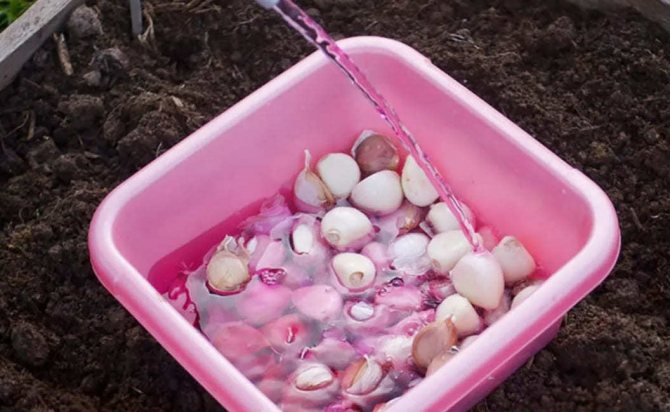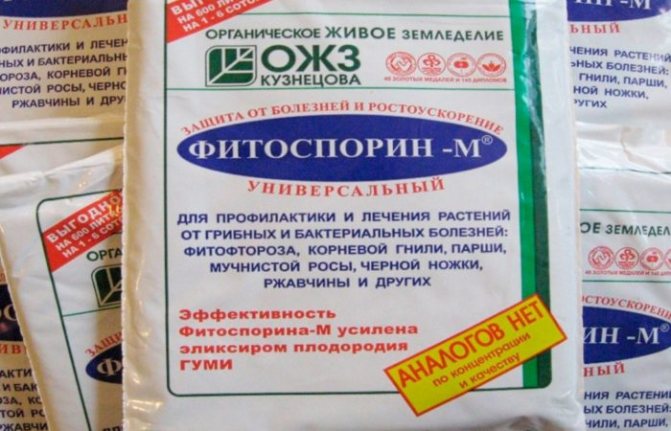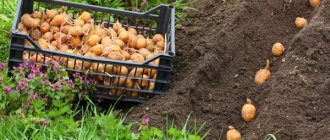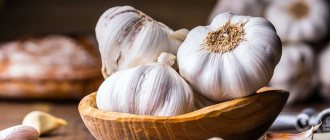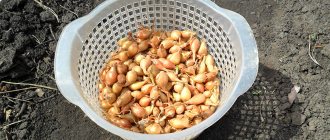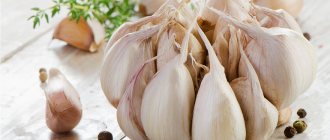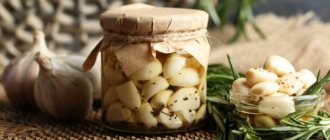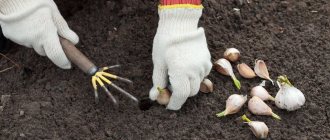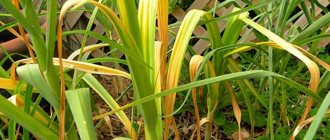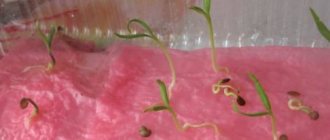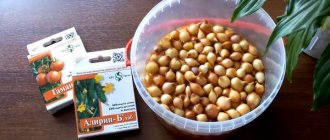The winter planting of garlic is used as often as the spring growing method. In this case, the plant develops well and gives a good harvest even with minimal effort. For a successful result, it is very important to properly prepare for planting garlic in the fall. Features and important nuances of such works are highlighted in our information.
Why processing is needed
Despite the fact that garlic is often used in folk medicine due to its bactericidal qualities, the plant itself is prone to infectious diseases. A vegetable that was planted before winter stays in conditions favorable for the development of diseases for a long time. Pathogens often live in the ground. Most of them tolerate cold well. Infections spread quickly and it is difficult to save the affected elements. Often, the only way out is to dig out the plantings and then disinfect the soil.
Also, larvae of pests (for example, onion flies, nematodes) may remain in the bottom of the garlic. Insects destroy the garlic and spread infections, which greatly aggravates the situation. That is why it is so important not to neglect the processing of the planting material. This will help prevent mosaics, penicillosis, rot, and other problems. Otherwise, even the most modern and resistant hybrids may suffer.
Care after landing
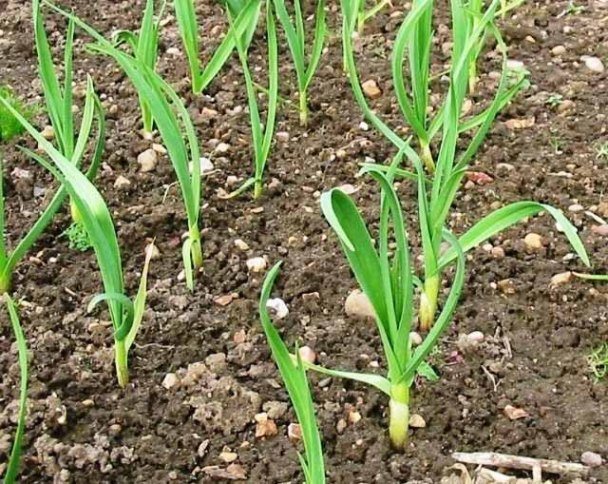
In the fall, planted garlic practically does not require maintenance, but a little preparation for winter is needed. The garden bed after planting the cloves and one-toothed is usually not watered. Enough rains. If the fall is dry, the soil can be slightly moistened with a watering can so that the bulbs take root faster.
For the winter, the bed needs to be insulated. The rule does not apply only to residents of the southern regions. In all other areas, the garden bed is covered with mulch from straw, foliage, and small branches. In the spring, large organic matter is harvested. Small mulch need not be scooped out. Organic matter will serve as a fertilizer, prevent moisture evaporation, inhibit the growth of weeds. Planting material that has survived the winter well can be identified by the green shoots breaking through in the spring from under the mulch. You don't need to water the garlic. For the first time, there will be enough moisture in the ground after the snow melts. As soon as the bed, after drying, begins to be covered with a crust, the first loosening is performed. It is impossible to tighten it, otherwise the crops may suffocate.
Selection and preparation of planting material
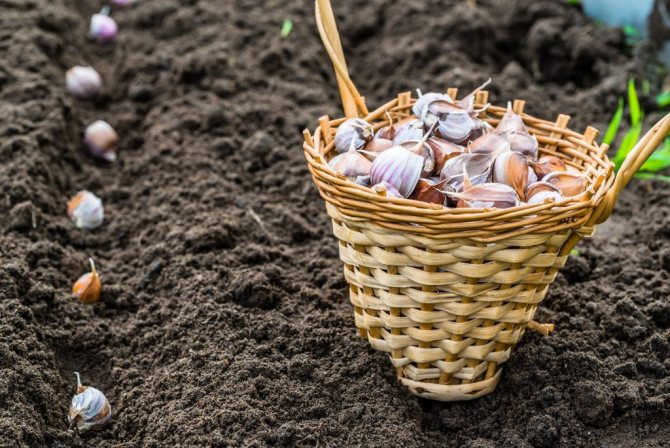

For planting, it is necessary to select high-quality seed material. It should be borne in mind:
- Head size. Only large specimens are chosen, otherwise the harvest will turn out to be small.
- The mass of cloves. If the wedges in the head are about the same weight, then they are more likely to produce a crop with even teeth.
- The number of lobules in the head. If there are less of them than it should be for the variety, then they are rejected. This indicates the degeneration of culture.
- The degree of adhesion of the skin. If the garlic is healthy, then it will be difficult to remove.
- The integrity of the seed. It should not show any signs of disease (rot, dark spots, etc.).
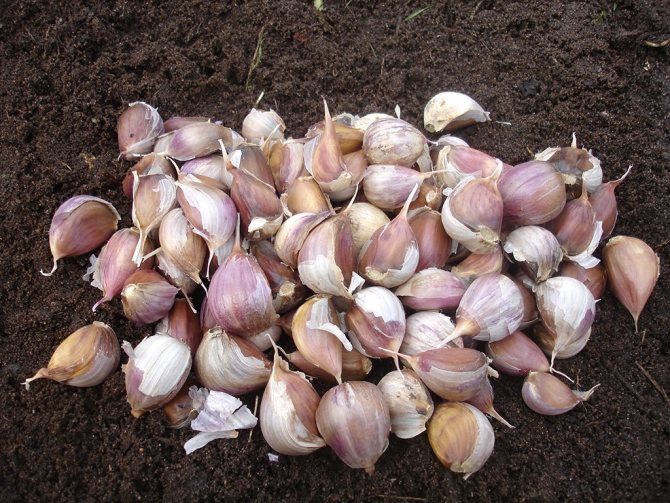

Attention! Before planting in the winter, it is important to make sure that winter garlic is selected and not spring garlic. The first can be calculated by such signs as the presence of an old arrow, the arrangement of the teeth in one tier and the purple tint of the skin. If you plant spring garlic in the fall, then it can freeze and not sprout in the spring.
After sorting, the heads are disassembled into slices. Do this a couple of days before planting in the soil. If the procedure is performed earlier, the root base will dry out. The teeth are disconnected as carefully as possible, trying not to violate their integrity. The roots should be visible at the bottom. If they are absent, the garlic will not sprout. The husk is not removed from the cloves, as it is a barrier to pests and infections. In addition, removing it can damage the root base.
How to prepare a garden for garlic
The preparation of the beds for planting garlic before winter is carried out in several stages. To ensure the most comfortable conditions, it is imperative to take into account the peculiarities of the agricultural technology of this culture and the basic requirements for the soil composition. It is also very important that the crop on this bed is harvested a month and a half before planting, otherwise the land will not have time to "rest".
What needs to be done:
- Remove the tops and roots of plants grown in this area.
- Thoroughly loosen or dig up the garden bed.
- Apply a sufficient amount of fertilizer.
- Disinfect the garden from possible pests and fungi.
- If necessary, improve the composition of the soil, achieving a slightly acidic environment.
- For planting, it is necessary to prepare an area that is evenly illuminated by the sun and without stagnant melt water.
- Immediately before planting, it is necessary to moisten the soil well.
The preparation of the garden for garlic in the fall is carried out in about a month and a half after planting. So that the site is not empty and not overgrown with weeds, you can plant green manure plants on this place. During this time, they will have time to give a good "harvest" of tops, which will enrich the soil completely safely and naturally, without the use of unnecessary chemicals. The seeding of the aerial part of the green manure should be carried out about a week before planting the garlic, so that the roots have time to soften enough and begin to decompose in the ground.
You may be interested in: Urea fertilizer application in the garden
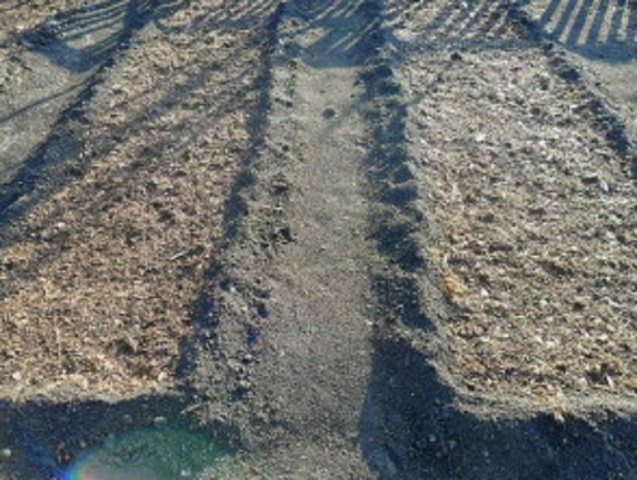

How to process
Both natural and chemical agents are used to process garlic. In any case, it is important to adhere to the dosages indicated in the recipes. If the concentration of the active ingredient is too low, then the result will not be achieved. Excessive dosage can burn the seed, making it unsuitable for planting.
Ash liquor
To get ash, spruce or birch firewood is used. When ash powder is dissolved in water, dust particles go to the bottom. The liquid absorbs calcium and potassium hydroxides, which are alkaline. This agent effectively protects the crop from nematode damage and at the same time acts as a fertilizer that stimulates growth. The solution is prepared as follows: 1 glass of ash is poured into 1 liter of water and stirred, then heated over low heat, but not brought to a boil. After cooling, the clear liquid is poured into a clean container. Garlic cloves are immersed there for 2 hours.
Manganese
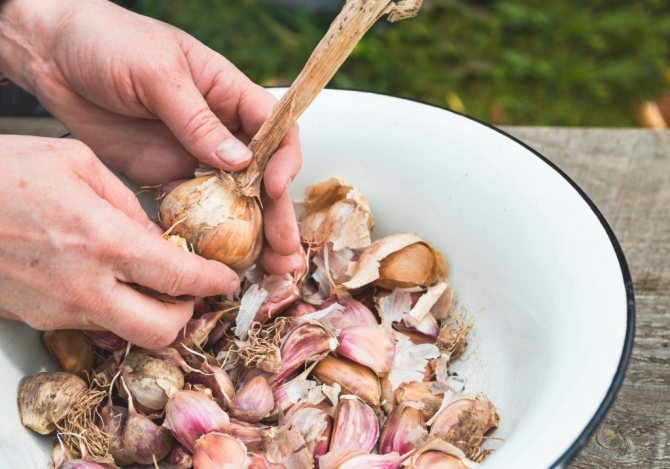

It fights against disease-causing fungi and pathogenic microbes, saturates the garlic cloves with potassium. The solution is not difficult to prepare. To do this, dissolve such an amount of powder in water, after which the liquid acquires a pale pink hue. If the seed is healthy and there is no damage on it, then it is immersed in the solution for an hour. Otherwise, the processing of the teeth takes up to 10 hours.
Copper sulfate
This remedy protects garlic from all diseases. To obtain a disinfectant solution in 1 liter of water, pour 5 g of vitriol and stir thoroughly. The cloves are dipped into the finished liquid for no more than 10 minutes. This time is enough for the active substances to penetrate into the skin. Finally, remove the vegetable and lay it out on paper or a towel to dry out.
Fungicide "Maxim"
The drug is not toxic to humans. It is odorless and dissolves quickly in water.It cannot be used to treat germinated, already infected or cracked seeds. It prevents diseases, but does not cure them. The solution is prepared in glass or plastic containers. Add 2 ml of the preparation to 1 liter of water and mix thoroughly. This volume is enough to disinfect 1 kg of planting material. You need to use the prepared liquid within 24 hours. Maxim protects garlic from black, penicillous and gray rot.
Fitosporin
This is a popular drug that belongs to the group of biofungicides. The manufacturer produces it in liquid form, in the form of powder and paste. Experts advise choosing the latter option, since it is easy to breed and at the same time it is economically consumed. The powder is difficult to dilute and cannot be stored after opening the package. The drug in liquid form is weaker in action.
Attention! Work on the preparation of disinfection solutions and processing of planting material is carried out with gloves. After the end of the procedure, hands are washed with soap.
The tool is prepared as follows: 200 g of paste is dissolved in 400 ml of water. This is a stock solution. You can store it for a long time. When there are leftovers before winter, they are diluted with water, and then watered with it in a compost pit or soil near trees and bushes. For disinfection of garlic, 0.4 g of the mother liquor is diluted in 0.5 l of water. The vegetable is soaked in the resulting product for 30-60 minutes. If the drug was purchased in powder form, then it is in the amount of ½ tsp. dissolved in 1 liter of water. The teeth are soaked in the prepared liquid for 15 minutes.
Salt
A concentrated saline solution is made to disinfect the garlic. To do this, dissolve 2 tbsp in 1 liter of water. l. salt. To achieve the best result, add another 1 tsp to the finished liquid. soda. The teeth are immersed in water for half an hour and then allowed to dry naturally. This solution softens the garlic shell and kills pathogens not only on the surface, but also inside.
Fundazol
It is a fungicide that is used not only for prevention, but also for the treatment of plant diseases. The drug is toxic to humans, so use it with extreme caution. The manufacturer releases it in the form of a white powder with a specific aroma. The solution is prepared as follows: dilute 10 g of the drug in 500 ml of water. The teeth are soaked in it for a day.
Tar
This remedy helps prevent onion flies and rot. Moreover, it is safe for both humans and the environment. The solution is prepared as follows: dissolve 1 tsp in 1 liter of water. funds. The teeth are soaked in it for 30 minutes just before planting. Also, the area between the rows is watered with a tar solution after the germination of the culture. To do this, dilute 1 tbsp in 10 liters of water. l. tar and 30 g of soap. After 2 weeks, the procedure is repeated.
Ammonia
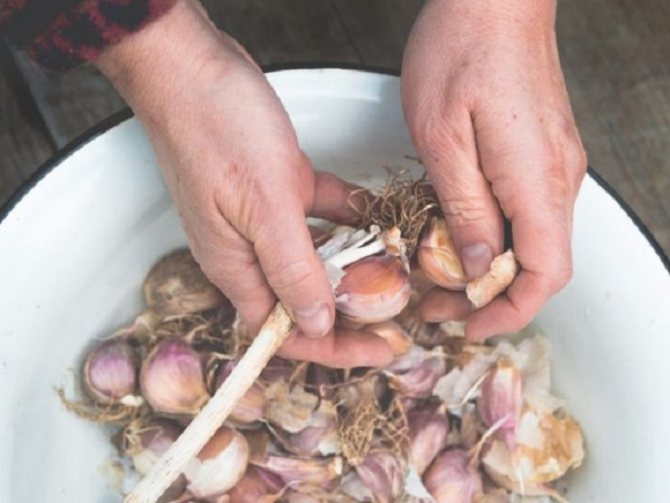

To prepare a disinfectant, 30 ml of alcohol is diluted in a bucket of water. The prepared liquid is sprayed with planting material from a spray bottle. For the best effect, plantings are also watered with an alcohol solution in May. Prepare it like this: dissolve 5 tbsp in 10 liters of water. l. funds. This not only destroys pathogens, but also saturates plants with nitrogen and stimulates their growth. The procedure is carried out in the evening after morning watering and loosening of the soil.
Processing according to Ganichkina
Oktyabrina Ganichkina, candidate of agricultural sciences, recommends processing garlic with a Homa solution (copper oxychloride). Do it like this: 1 tsp. the funds are dissolved in 3 liters of water. Planting material is placed in the finished liquid for 10-15 minutes. After this time, the teeth are not washed. They are laid out on a towel and allowed to dry naturally.
Land preparation
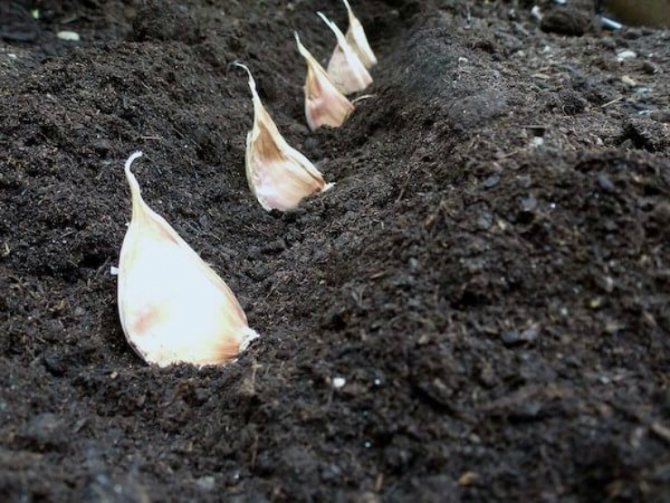

To obtain a good harvest and complete protection against diseases, processing alone is not enough. The quality of the soil is also important. It should be healthy, without any pathogens in the composition. Garlic should not be planted in the same place for 2 years or more in a row.The same applies to areas where the soil has been enriched with manure. Here's why:
- the ground part of the plant will actively grow and develop to the detriment of root crops;
- the heads will form loose and will be poorly stored;
- increase the risk of developing fungal diseases.
Attention! It is useful to plant marigolds, wormwood and calendula near garlic. Parasitic insects prefer to stay away from these plants.
The most favorable precursors for garlic are: cucumber, tomatoes, cabbage and pumpkin. For planting crops, choose a well-lit place where moisture does not stagnate (ideally on a hill). A suitable location for the beds is the east-west part. Before planting, they dig up the soil, remove all weeds and, if the soil is acidic, bring in ash.
Finally, the soil is watered with a fungicidal solution. For this, one of the following options is usually used:
- ammonia and soda (2 tablespoons per bucket of water);
- Bordeaux liquid (50 g per 5 l);
- copper sulfate (20 g per 5 l).
Solution consumption - 1 liter per 1 m2. Some summer residents prefer to buy soil disinfection preparation in specialized stores instead. It is produced in liquid form in 50 ml containers. The composition includes thiram and carboxin. It protects garlic from root rot and soil infections over a long period.
Dates and rules for disembarkation, useful recommendations
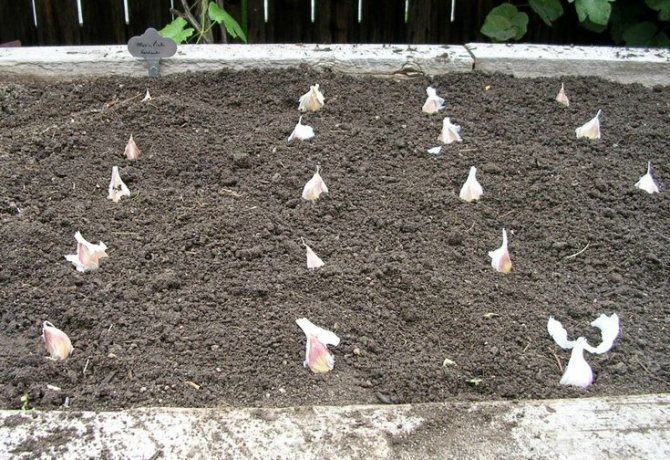

When buying garlic from your hands, you can get into the wrong variety, so it is better to buy planting material either in specialized stores or from friends. Garlic is planted 15-20 days before frost. Then its root system has time to develop before frost, but seedlings do not appear yet. In this case, it is convenient to proceed from the temperature. If its indicators are + 10-12 ° C, they begin to disembark. In the middle zone of the country, this time usually falls in the middle of autumn. In the southern regions, garlic is planted a little later, and in the northern, on the contrary, earlier. The culture is not planted immediately after digging the soil. The land should have time to settle, and the fertilizers should take root.
When planting, make sure that the width of the bed is 1 m. The tines are immersed in the ground with the bottom down to a depth of 8-12 cm (do not press hard so as not to damage the roots). At the same time, a distance of 10 cm is maintained between them. Directly on the places where the cloves will be planted, pour 1 tbsp. l. sand. It will perform a drainage function and prevent decay of the planting material. The optimal spacing between rows is 20 cm. After the completion of the procedure, the ground is covered with peat or dry foliage. In the spring, when the heads of the vegetable are formed, remove the arrows so that they do not draw out all the juices for themselves.
How is the deficiency of mineral elements manifested?
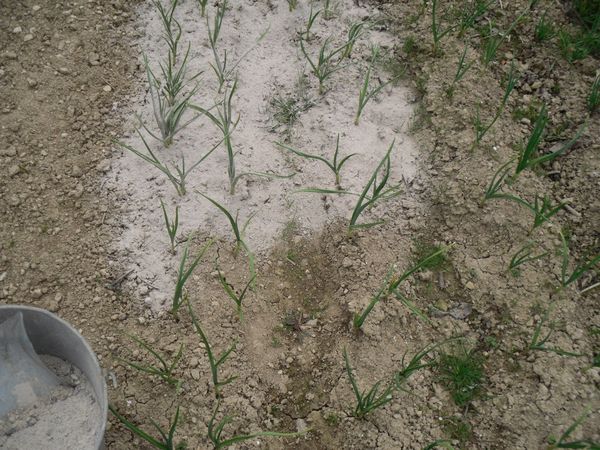

It will be possible to assess the success of planting and wintering garlic only at the beginning of spring. With the onset of warm weather, the winter shelter is removed, and the soil is carefully loosened and watered. It is important to carry out this procedure back in March - early April, so that the seedlings do not trample under the branches or canvas.
You may be interested in: Fertilizing fruit trees in the fall: compositions and principle of use
The plantings should be examined and checked for survival. In place of the dead teeth, you can plant new ones, as well as carry out the first feeding with nitrogen. As it grows, you should pay attention to the warning signs of nutrient deficiencies that the plant shows.
How to determine the nutritional needs of garlic:
- Whitish leaves indicate a lack of potassium. To prevent such conditions, you can sprinkle the beds with wood ash before each watering.
- Yellow and withered leaves are a sign of nitrogen deficiency. This can be corrected by feeding with urea and chicken droppings (settled and fermented) directly under the root of the plant. Such dressings are carried out immediately after watering, otherwise there is a great risk of burns to the roots.
- Slow growth and stunted appearance of plants can be associated with a lack of nutrients, therefore complex formulations can be used.
Often, the growth of garlic slows down with a strong increase in soil acidity. To prevent, the method of liming the soil is used, because even regular application of wood ash does not give such a result. Too alkaline formulations also do not provide adequate nutrition and can lead to stunted growth.
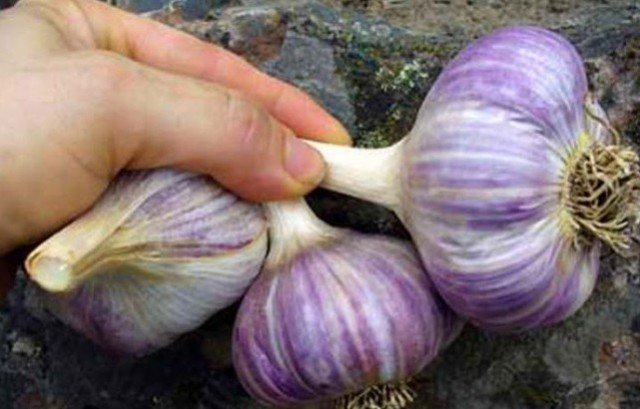

The process of growing winter garlic is most successful, but only with sufficient soil preparation and planting material. How to prepare the soil for planting winter garlic, which fertilizers are better to use, as well as other important nuances of growing this crop are discussed in our information.
Testimonials
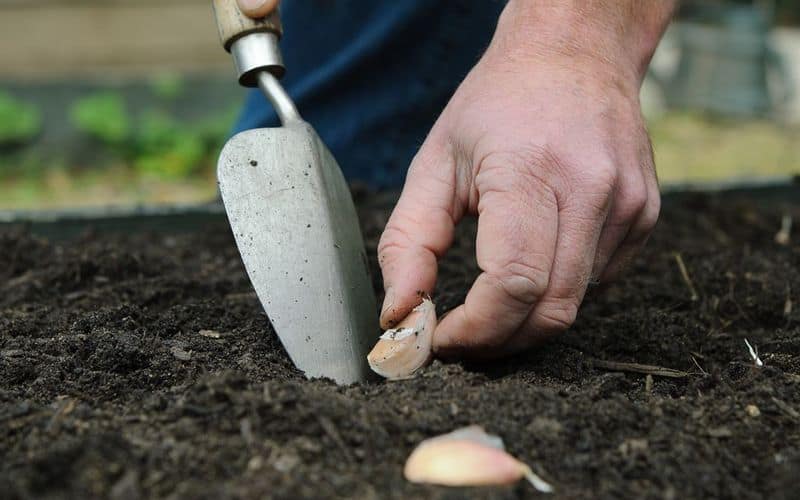

Antonina, 40 years old
Previously did not process garlic before planting. However, in the past few years, he began to get sick. Last year, a neighbor advised me to powder my teeth with crushed lime. For every kilogram of garlic, I used about 20 grams of powder. The method proved to be effective. Garlic after such treatment really did not hurt. I also liked the fact that the procedure did not affect the taste of the harvest in any way.
Dmitry, 33 years old
I always process garlic before planting. From the moment I started gardening, I tried more than one disinfectant, but I liked Fitolavin the most. I like that the drug is widespread and easy to find in stores. After processing, garlic does not get sick with it and gives a good harvest. The heads are large, healthy and beautiful in appearance.
Preparing garlic for planting is one of the main conditions for obtaining a high-quality harvest. It will increase the culture's resistance to harsh weather and make it immune to infections. It is equally important to choose the right place for growing and prepare the soil. If you follow all the recommendations of agronomists, the result of growing garlic will delight, since the volume of the harvest will increase significantly.


